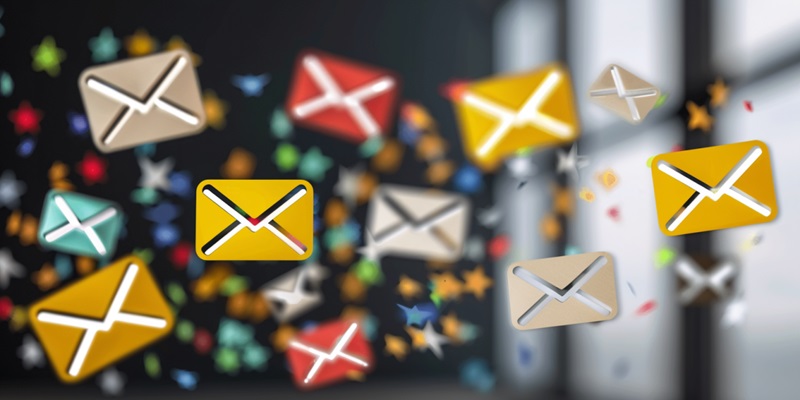Email marketing remains one of the most effective channels for driving sales and engagement year-round, but the holiday season offers unparalleled opportunities for businesses. During this time, competition in the inbox will be fierce, with numerous companies vying for consumers’ attention and dollars. Therefore, it’s crucial to start preparing your email marketing strategy well ahead of the holiday rush. This article outlines step-by-step instructions to gear up your email marketing for the holidays by focusing on essential tasks like regular audience engagement, list cleaning, and timely content delivery.
Begin Regular Engagement with Your Audience
One critical factor for successful email marketing during the holiday season is consistent communication with your audience. If your email campaigns are sporadic, suddenly bombarding subscribers with promotional emails during the holidays will likely backfire. Subscribers might not recognize your emails, which can lead to your messages being marked as spam. Email service providers also find erratic email activity suspicious, often filtering or blocking such emails as they may resemble spam.
To build trust with both your audience and email service providers, establish a predictable sending pattern. Even if you haven’t reached out to your list in a while, it’s wise to resume your email marketing a few weeks before the holiday season. Regularly scheduled emails foster familiarity and engagement, making your holiday promotions more impactful. This consistent approach not only keeps your brand top-of-mind but also sets expectations for when your audience can look forward to hearing from you, increasing the likelihood that they will read and interact with your messages.
Moreover, regular engagement allows you to gather valuable insights into your audience’s preferences and behaviors. You can adjust your strategies based on metrics like open rates, click-through rates, and other forms of engagement. By acting on this data, you can fine-tune your messaging to better resonate with your audience, ultimately making your holiday campaigns more effective.
Remove Outdated Contacts
Apart from maintaining regular communication, it’s equally important to ensure your email list is up-to-date and healthy. An email list filled with obsolete or unengaged contacts can drag down your campaign metrics and reduce your overall effectiveness. To avoid this, periodically verify and clean your email list. Running your contact list through an email verifier can remove invalid emails and obsolete data, resulting in better deliverability rates and higher engagement.
After verifying your list, segment subscribers based on their interaction history. Identify and isolate contacts who haven’t opened or clicked on your emails for an extended period. For those who haven’t engaged in over a year, consider removing them from your list. Continuing to email disinterested subscribers can harm your sender reputation and increase the likelihood that your messages will be sent to spam folders.
Additionally, a clean list enables you to focus on subscribers who are genuinely interested in your brand. This targeted approach not only enhances the efficiency of your campaigns but also maximizes your ROI. As you clean your list, reach out to dormant subscribers with re-engagement campaigns to win them back. Offering incentives or special content could rekindle their interest. If they remain inactive, it’s best to part ways for the betterment of your overall campaign health.
Send Relevant and Timely Content
Now that you have a clean and engaged list, your next priority is to continue sending valuable, relevant, and timely content to keep your audience engaged. Promotional emails should not be the only focus; incorporating educational content that addresses a pain point or provides useful knowledge can go a long way in maintaining subscriber interest. Your goal is to create a balanced content mix that encourages long-term engagement with your brand.
Think about what your audience finds valuable and try to deliver that consistently. This might include how-to guides, industry insights, or problem-solving tips related to your products or services. Additionally, offering free content such as e-books, infographics, or exclusive videos can help establish your brand as a trusted authority. Make sure this content is timely and relevant to your audience’s needs and interests.
A strong content strategy enhances your relationship with your subscribers, making them more likely to engage with your holiday promotions. It also provides more opportunities to collect data on what types of content resonate best, allowing you to refine your strategy continuously. By delivering useful content, you build a deeper connection with your audience, increasing the likelihood that they will look forward to your emails and participate in your holiday campaigns.
Experiment with Early Promotions
Email marketing remains one of the most effective ways to drive sales and engagement throughout the year, but the holiday season presents unparalleled opportunities for businesses. During this time, the competition in consumers’ inboxes will be intense, with countless companies striving to capture attention and spending. Therefore, it’s vital to plan your email marketing strategy well before the holiday surge. Preparation involves several key steps: maintaining regular engagement with your audience, cleaning up your email list, and delivering timely and relevant content.
Regular audience engagement ensures that your subscribers remain interested and invested in your communications. An engaged audience is more likely to open your emails and act on them. Cleaning your email list is also crucial; it helps you remove inactive subscribers and reduces the risk of your emails ending up in the spam folder. Finally, delivering timely content is essential for capturing the holiday spirit and converting interest into sales. This article offers a detailed, step-by-step guide to gearing up your email marketing for the holidays by focusing on these essential tasks.

